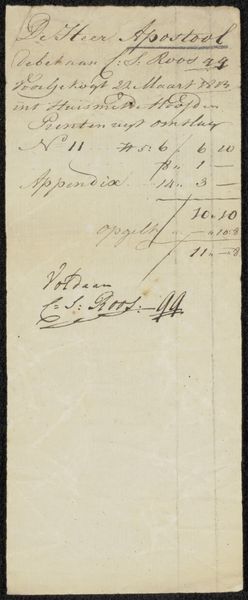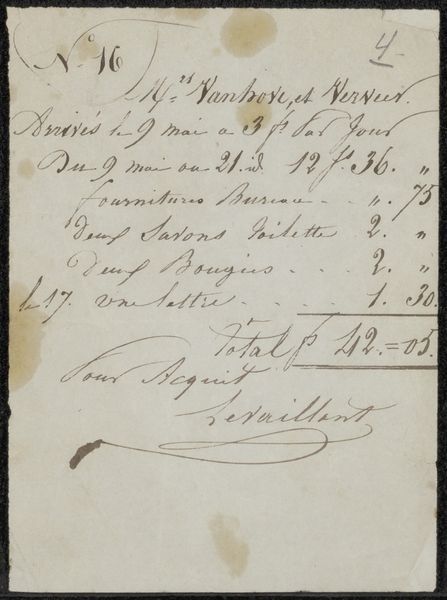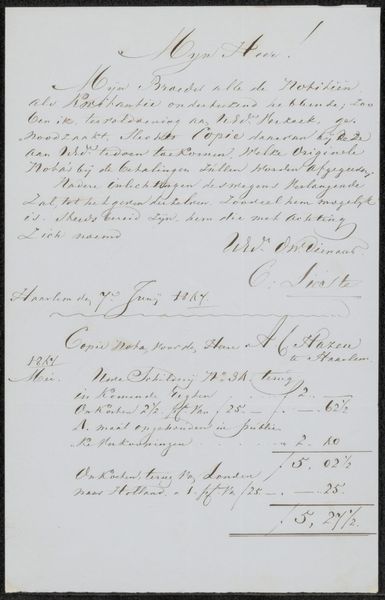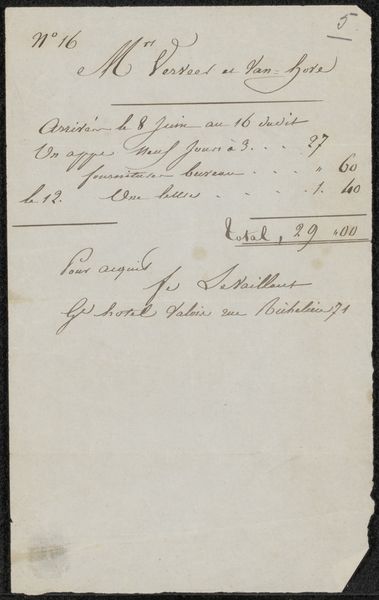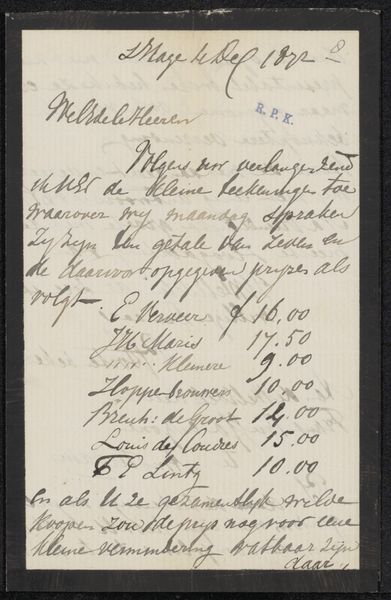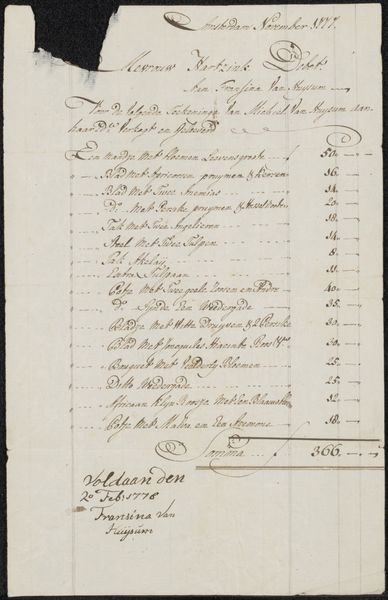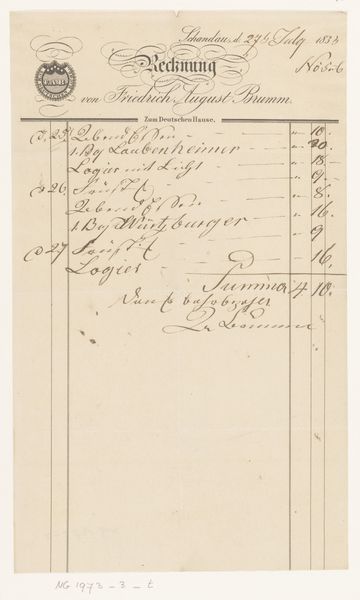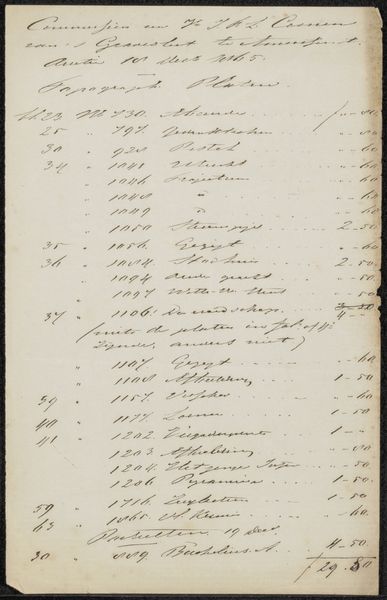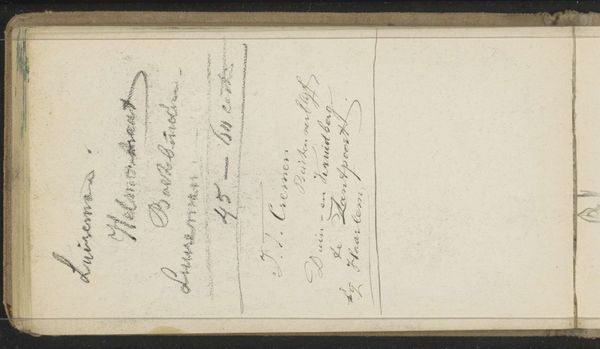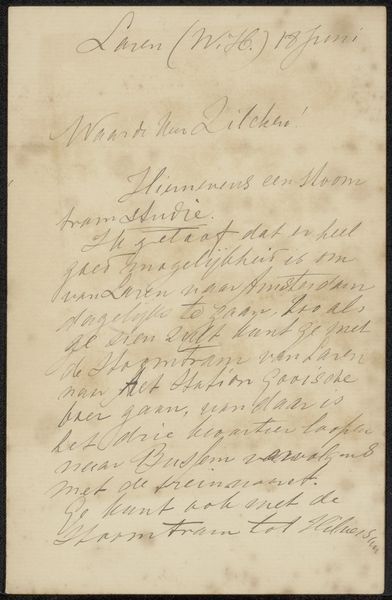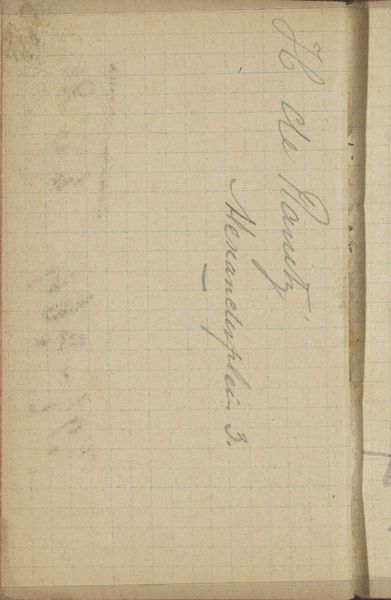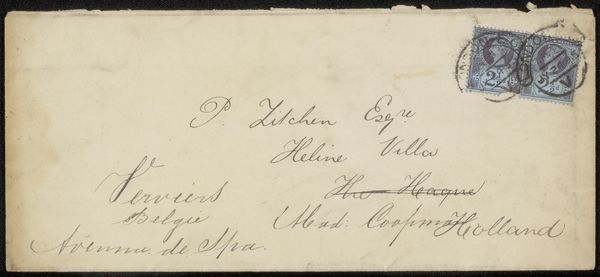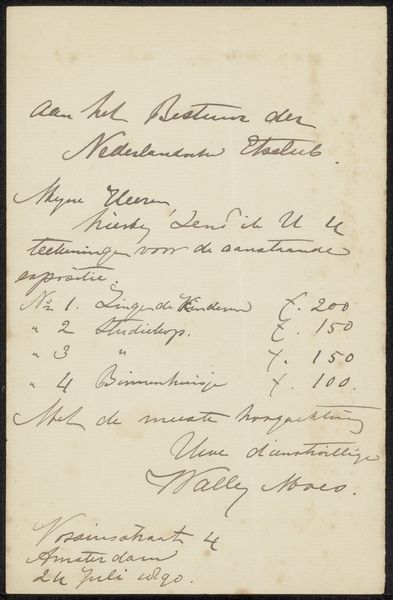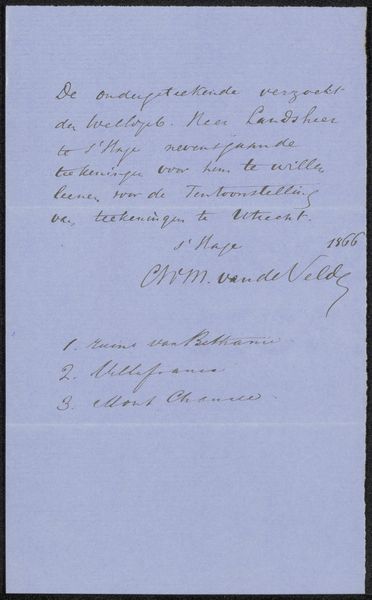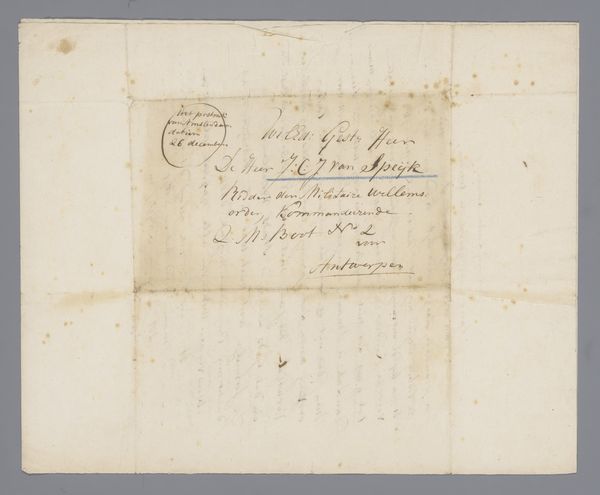
Ledger Figures, Capt. Richard Black (from Sketchbook) 1811 - 1893
0:00
0:00
drawing, paper, ink
#
portrait
#
hand writing
#
drawing
#
hand written
#
hand-lettering
#
hand drawn type
#
hand lettering
#
paper
#
ink
#
hand-written
#
hand-drawn typeface
#
handwritten font
#
handwritten
#
small lettering
Dimensions: Dimensions unavailable
Copyright: Public Domain
Curator: This is “Ledger Figures, Capt. Richard Black (from Sketchbook)” dating approximately between 1811 and 1893, a drawing by John William Casilear, now housed at the Metropolitan Museum of Art. It seems to be rendered in ink on paper. Editor: My first impression is the elegance and the constraint; the hand lettering itself is really beautiful, with some strokes heavily pressed and other extremely delicate and fine. It evokes a certain sobriety, even melancholy, perhaps due to the limited color palette or what looks like precise account entries. Curator: Indeed. The use of ink, with its limited tonal range, reinforces a sense of utilitarian function, emphasizing its origins perhaps within a merchant's business records rather than as an explicitly artistic venture. This blurs the line between accounting and aesthetics. We have these ledger entries and calculations presented in beautiful script. Editor: It's interesting how the text dominates as the sole visual element. Look at how he varies the line thickness and the deliberate rhythm in the ascending and descending strokes of the letters. The eye finds harmony and direction; these stylistic components bring out a complex layering of structure that's captivating. Curator: Considering the materials used, paper and ink, reflect broader issues of resource extraction, distribution, and the rise of industrial economies. Black ink becomes symbolic of power relationships between colonizers, commodities, and financial exchanges of the day and global trade networks it depicts.. Editor: Yes, that's very well said. Considering these strokes as material extensions of those market forces adds so many rich associations to what might initially read as simple lettering. Curator: In closing, understanding Casilear’s piece through the lens of materials and modes of production opens up critical insights into the social underpinnings of artmaking itself during this era of expansion. Editor: Agreed; my focus remains captivated by its formal structure, though. Examining these elements provides unique interpretations that enhance our perspective on artistry regardless of historical context or cultural background of production!
Comments
No comments
Be the first to comment and join the conversation on the ultimate creative platform.
